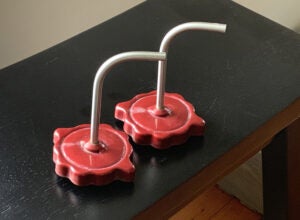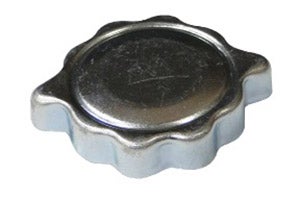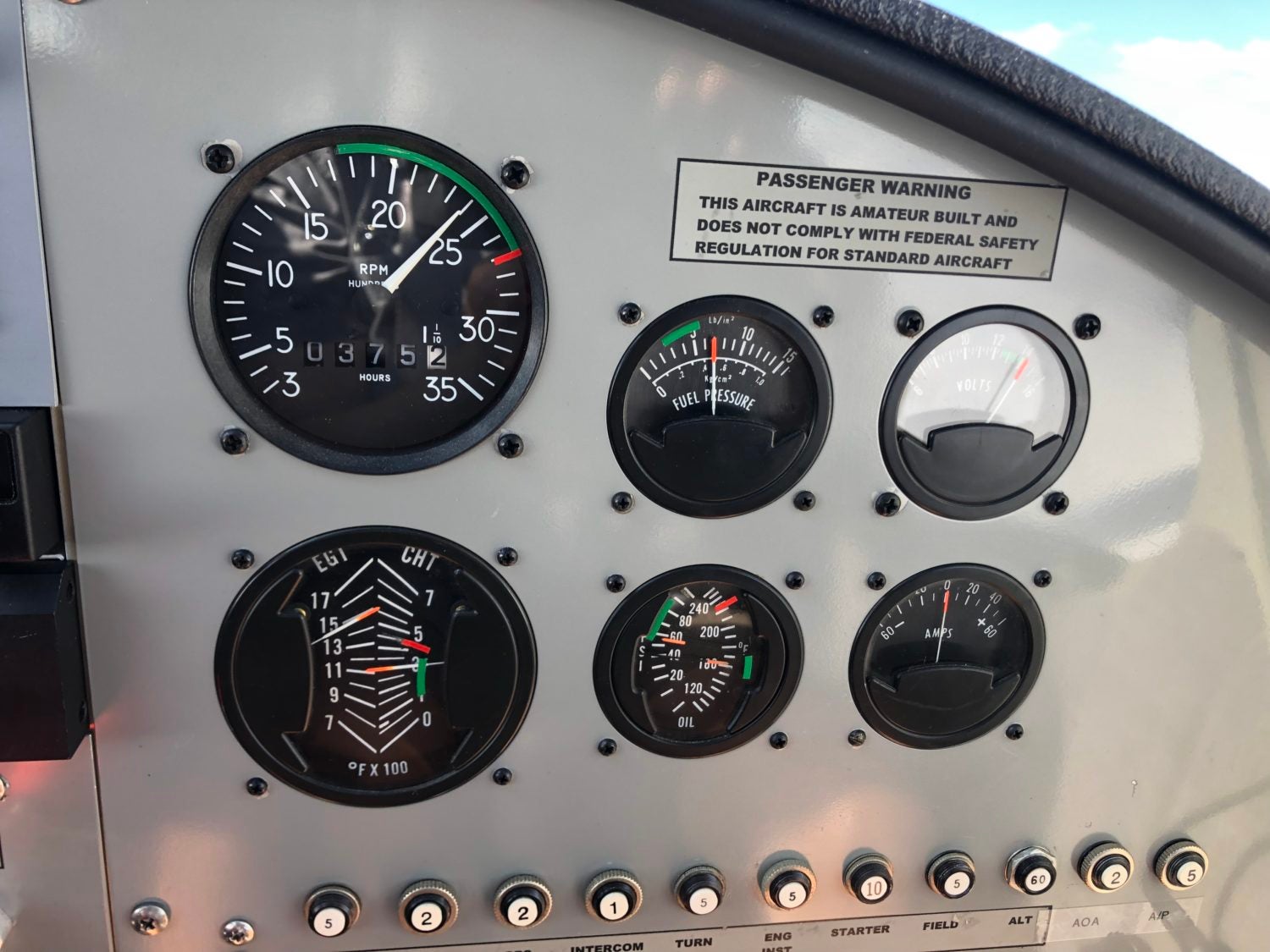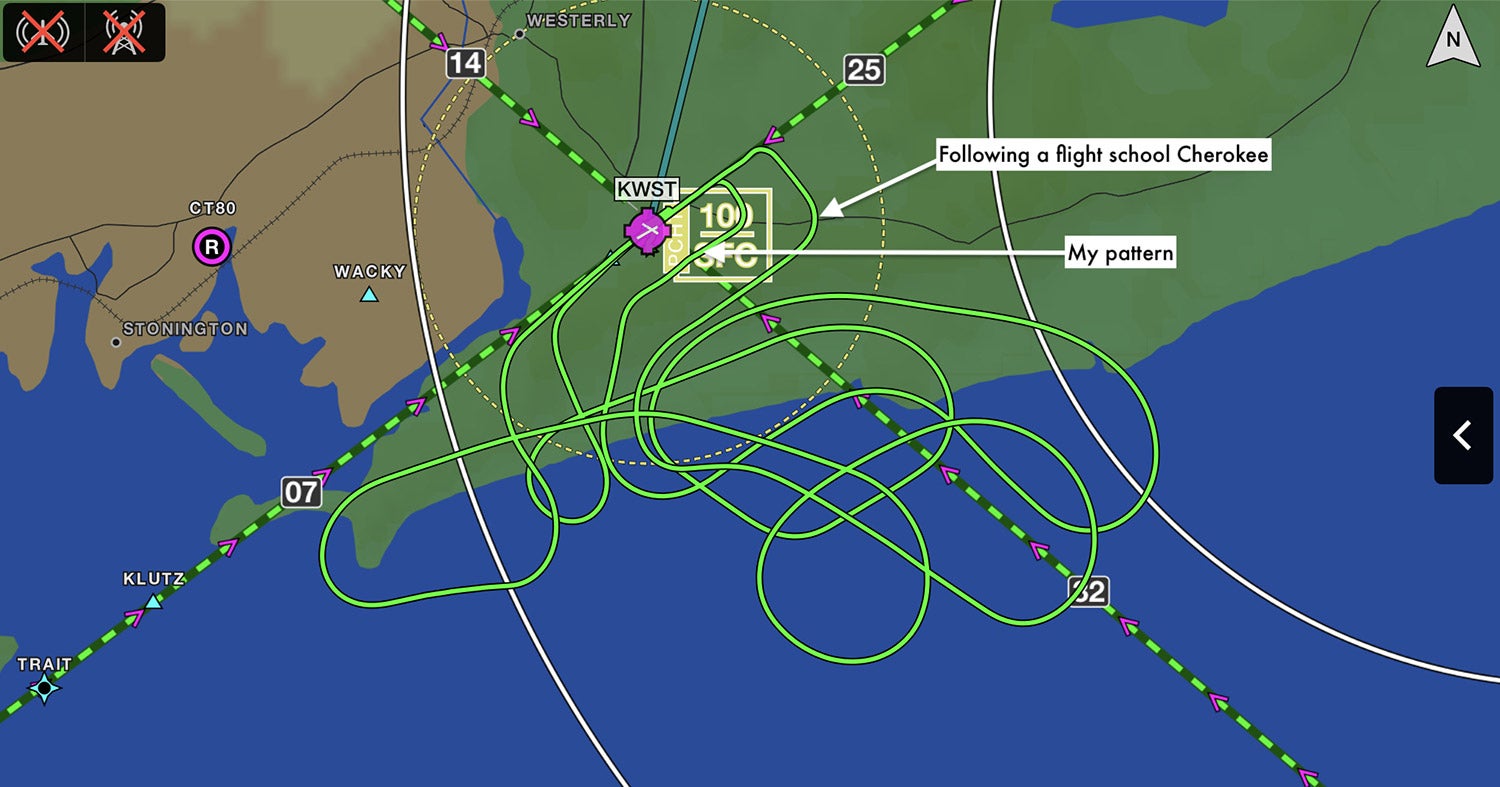It’s no secret that even though the GlaStar I’ve just acquired has been flying since 2002, I’m nevertheless in the process of making “upgrades” and other alterations as I go along. I expect it to be a gradual process to get Charlie Echo into an IFR-capable traveler, so I’ve been testing my patience. Today’s project was pretty simple but I decided to take a cautious flight-test-like approach anyway.
A bit of backstory. My GlaStar has two welded-aluminum fuel tanks in the wings, placed very near the root. These tanks are designed to have two inboard feed points, plus one vent line at the upper outboard end and one feed port on the outboard side to accommodate the aux tanks that were an option when this airplane was built. Most GlaStar builders also opted for the extra-cost flush fuel caps and simply plumbed this outboard vent line to the wingtip. The vent then pokes through beneath each wingtip with the open end cut at an angle into the relative wind.

Not my GlaStar. It had both the “John Deere” protruding caps but these caps had J-shaped overhead vents welded into their centers. No doubt this arrangement is good for keeping a bit of head pressure on the tanks when in flight but they’re also perfectly situated to pick up water and ice in the clouds. Of course, this airplane was built as a purely VFR ship, so it made sense.
I do have a pair of flush fuel caps the previous owner gave me, and during the first inspection, he pointed out that the tubing for the wingtip vents had already been run into the wing. All that was needed was removal of the old caps and their bosses, which screw into the tops of the tanks, and then plumbing of the vents. But I knew from talking to Ted Setzer, renowned GlaStar co-designer and builder, that removing those spigots (or bayonets) could be really troublesome if any corrosion had set in or the threads were galled at all. I decided, instead, to go halfway: Aircraft Spruce had a set of the same caps, in the unvented variety, for a measly $8 each. They wouldn’t be as sexy as the flush caps but the setup would greatly reduce the chances of the vents icing over.

Then once the season closes for me and the GlaStar hibernates a bit, I can swap to the flush caps without a tight timeline. That way if I have to do more than just unscrew them—and Ted warned that remedial work can involve folding the wing and removing the tank—I won’t be artificially grounded. Grounded by snow and freezing rain is another matter; not a lot I can do about that besides move.

A younger me might have just bolted both vents up, twisted on the new caps, and gone flying. After all, this vent system is well understood in the GlaStar and Sportsman realm; we all know it works. But it just felt right to go about this one side at a time, measure the differences in the worst-case situation I could replicate, and see what I got.
So I first verified that the vent tube was in good shape throughout the wing and blew it clear before connecting. One challenge was simply removing the pipe plug in the tank, which was “safetied” with Pro-Seal. Ugh. There’s not much room to swing the required 9/32-inch wrench but I was able to find a very clever 3/8-inch-drive “pipe plug socket set.” The socket fit the square plug head perfectly and made short work of the Pro-Seal.

From there, the process went quickly and soon I was climbing out near the Westerly airport and, once above 1000 feet AGL, feeding happily off the right-side tank with the under-wing vent. I knew from experience what the fuel pressure did in this carbureted O-320 during the climb and I watched it closely the entire maximum-performance climb. Because I also knew that the harder I asked the GlaStar to climb, the hotter it got, and the more the fuel pressure sagged. Still in the green arc, but by the end of the climb to 5500 feet, the inlet fuel pressure had dropped from 8 psi to 4 psi. (Minimum is 0.5 psi, so still plenty to go.) I was grateful and relieved to note that the under-wing vent system acted exactly like the over-wing system did under similar circumstances. It was also at this point that I was glad the builder had chosen dual fuel shutoff valves, one for each tank. Many GlaStars were built with a simple on-off valve, which would have muddied the results of my test, to say nothing of the inability to balance tanks in flight.

After landing, I completed work on the other side and flew again. Same results. By taking the time to test each change independently and to do so on a good-weather day, I feel a lot more confident that the vent system will work as I’ve come to expect from the design.
After the second landing, I opened the wing, checked my work, and was happy to see no leaks from either side. Now what remains is a longer flight to see if the vent change will have made this airplane’s tendency to feed unevenly better or worse. But I’ve now tested this system in takeoff, climb, descent, and landing, even running on one tank for a prolonged period. And I did so with partial tanks, and will double-check the work with full tanks.
The point is this: All the best flight tests strive to make one change and test, make another change and test, and so on. All the while considering the potential impact of the change and how it might affect other systems ion the aircraft. Minimize the number of variables so that if you have a problem, it’s relatively easy to back off and identify the cause. Or so we all hope.
Oh, one more thing: Had this been a change in the fuel system to something not extremely well known in the GlaStar world, I would have committed a full ground-based flow test before even considering flying.
Maybe I’m getting more conservative in my old age. Maybe I just want to keep aging.













